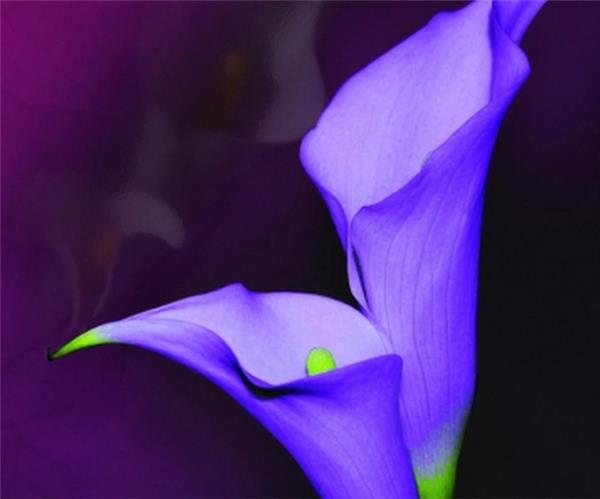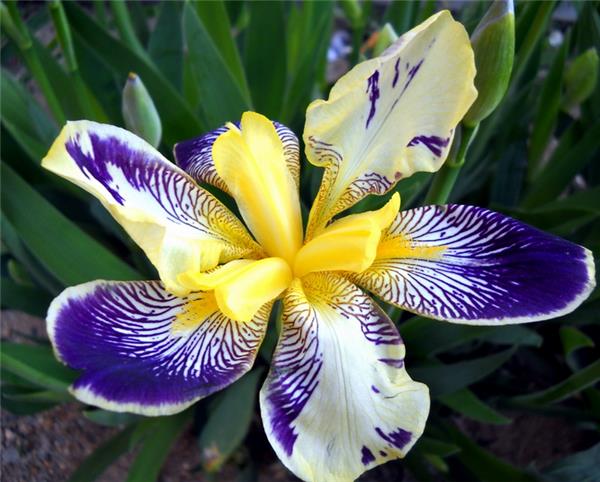What is the flower language of blue calla lilies?
The horseshoe lotus bracts are white and large, just like horseshoes, and are easy to breed, so many people like to put calla lilies at home for make-up, but I wonder if you have ever seen blue calla lilies. Do you know what the flower language of blue calla lilies is?

Characteristics of blue calla lilies
Calla lily is a sturdy perennial herb of Araceae and Zantedeschia. With tubers and easy to tiller to form tufted plants. Leaves basal, lower leaf sheathing, leaf blade thicker, green, heart-shaped arrow-shaped or arrow-shaped, apex acute, acuminate or with caudate tip, base cordate or hastate. Like loose, fertile, humus-rich clay loam. Blue calla lilies are dyed with white calla lilies.

What is the flower language of blue calla lilies?
At present, blue calla lilies do not exist in nature. the blue calla lilies sold on the market are dyed artificially by adding blue dye to white calla lilies, which are unique because they are rare.
So for this reason, blue calla lilies stand for "polluted, defiled love". Of course, many flowers are cultivated through research, such as black tulips, hoping to grow real blue calla lilies one day.

Finally, let's take a look at the culture method of calla lilies.
1. Temperature
Suitable for growth between 15 degrees and 25 degrees, high and low temperatures will make calla lilies stop growing, or even die. When summer is higher than 25 degrees, you should sprinkle some water on the page to cool down, or move to a cool place. When the winter temperature is lower than 6 degrees, you should give a top anti-freezing measure, you can move to the house and put it on the windowsill where you can see the sun. The temperature below zero may cause the roots to freeze.
2. Lighting
The requirement for light is not strong. Calla lilies are not plants that particularly need sunlight. They can be placed on a windowsill or balcony that can be masked. Spring, summer and autumn should be given some cover to cover up about 40% of the light. High temperatures in summer should not be placed in strong light so as not to burn branches and leaves. In addition, more light should be given during flowering.
3. Watering
More watering, calla lilies require more water, should always keep the basin soil moist, do not be afraid to water it, even if stagnant water will not be a problem, but in cold weather in winter should be less watering, so as not to freeze the roots. And the amount of water should also be reduced during the dormant period. Spray water around the calla lilies during flowering.

4. Soil
Like loose and fertile soil, you can use loose and fertile humus soil mixed with a small amount of sandy soil, in the first pot can apply some base fertilizer.
Moderate fertilization, if you want to make your calla lotus grow well, you should control the fertilizer and water, about once in 15 days, you can choose liquid fertilizer or go to the flower market to buy fertilizer specifically for calla lilies. Fertilizer should not be applied during flowering.
5. prevention and control of diseases and insect pests
The more common diseases and insect pests of calla lotus are: leaf mold, leaf spot, root rot, seed fly, leaf mold will make leaves yellow and appear patches of different sizes, leaf spot disease produces light brown to yellowish brown spots, root rot disease is the first to wither in the lower leaves of the plant, and then spread to the inner leaves. Different control methods should be chosen for different diseases, and the control solution specifically for the disease can be selected in the market. generally speaking, plant management should be strengthened to keep the room ventilated.
Related
- Wuhan Hospital Iron Tree Blooming Result Was Instantly Frightened by the Gardener Master
- Which variety of camellia is the most fragrant and best? Which one do you like best?
- What is the small blue coat, the breeding methods and matters needing attention of the succulent plant
- Dormancy time and maintenance management of succulent plants during dormancy
- Minas succulent how to raise, Minas succulent plant pictures
- What are the varieties of winter succulent plants
- How to raise succulent plants in twelve rolls? let's take a look at some experience of breeding twelve rolls.
- Attention should be paid to water control for succulent plants during dormant period (winter and summer)
- Watering experience of twelve rolls of succulent plants
- Techniques for fertilizing succulent plants. An article will let you know how to fertilize succulent plants.



